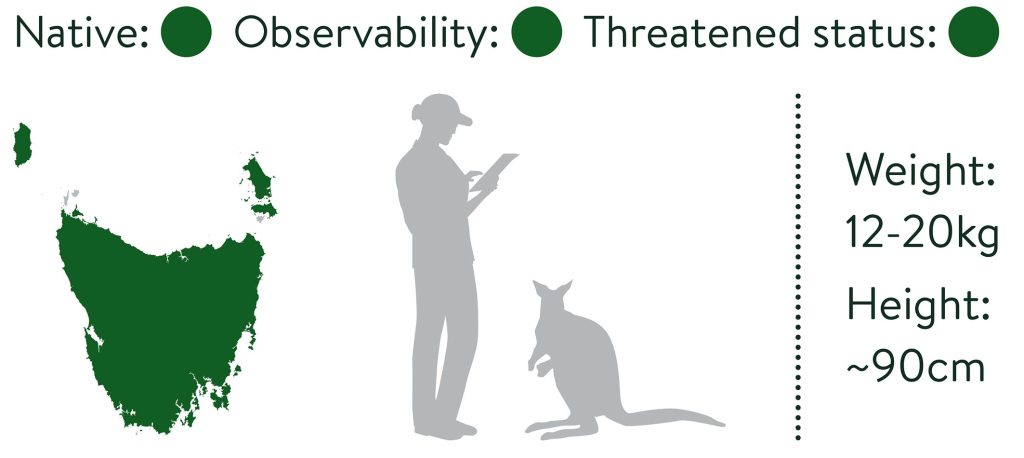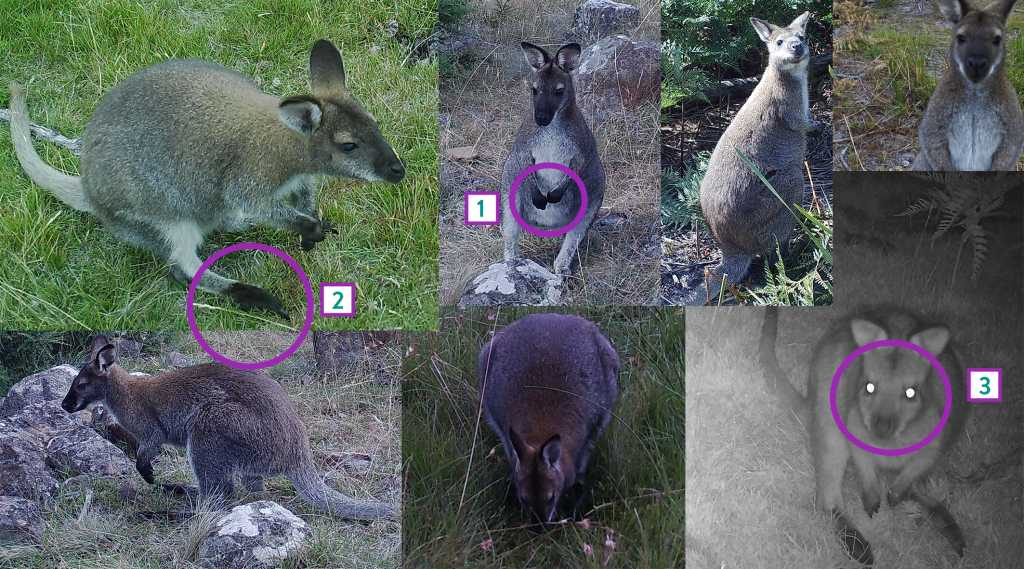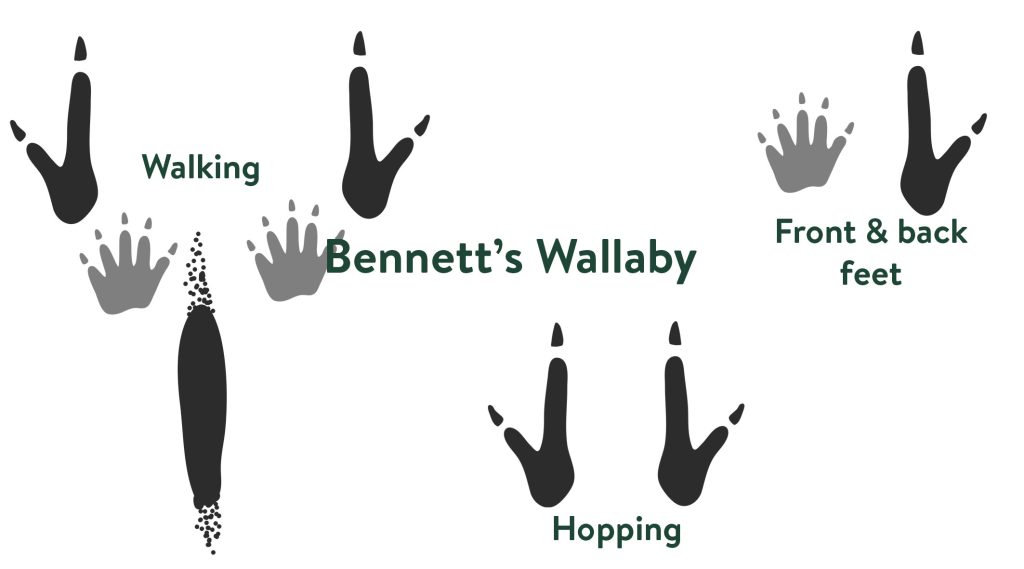Macropodidae | Notamacropus rufogriseus
Bennett’s wallabies are the second most common macropod in Tasmania, right after the pademelon. They are found all over the state, and have been introduced to the United Kingdom and New Zealand, but are most abundant on King and Flinders Islands. A subspecies, the red-necked wallaby, also occurs from as far north as Gladstone in Queensland to the southeastern corner of South Australia.

Lifestyle
Bennett’s wallabies are primarily nocturnal and lead solitary lives, spending about 60% of their time alone. However, during dawn and dusk, particularly in winter, they converge into foraging groups. Females tend to form close bonds with one or two besties, usually relatives. In contrast, males don’t really befriend any particular individual. Notably larger in size—weighing up to 27 kg compared to females’ ~16 kg—males also command larger home ranges, averaging 72 ha in comparison to the female average of 33 ha in one study.
Tasmanian wallabies breed seasonally between January and July, with most births occurring in February. They have a gestation period of about 30 days and give birth to just one offspring at a time. Joeys spend about nine months in the pouch, followed by an additional three to nine months at foot alongside their mothers.

Key identifying features
Reddish coat, particularly around the back of the neck. Known elsewhere as the red-necked wallaby. Dark forepaws (1), hindfeet (2) and nose (3). Dark stripe down centre of the face with white markings on the side. Often black rim or tips on the ears. Coat appears to vary in colour across the body. Grey-white underbelly. Long robust tail almost the same length as the body. Eats browse and grass. Often recorded socialising.
Similar species
Tasmanian pademelon – usually smaller body size; rounder; shorter and less defined hind legs, more uniform in colour; tail is shorter than body.
Forester kangaroo – larger and more muscular body; larger ears; lacks black markings on nose and ears; absence of white markings on face; coat is less rufous and more grey.
Habitats
Bennett’s wallabies are commonly spotted in habitats ranging from forests, woodlands, shrublands, and agricultural lands to parks and gardens. Like pademelons, wallabies thrive in areas where fertile pastures for foraging meet forest or woodland for shelter, but they do show a particular inclination for a more open understorey.
Diet
Comprising 90% of Bennett’s wallabies’ diet, grasses and broad-leafed forbs, which include non-woody flowering plants like wildflowers and various weeds, are their primary food sources. While they exhibit a preference for grasses, particularly in lower elevations, Bennett’s wallabies switch to browsing shrubs and leaves when occupying higher terrains.
Threats
Fortunately for them, Bennett’s wallabies don’t face any major threats. In fact, their population has likely experienced an increase following the extinction of their native predator, the thylacine, and the formation of ‘edge habitats’ through clearing. While they are a common victim of road collisions and are subject to commercial harvesting, their survival is relatively secure.

